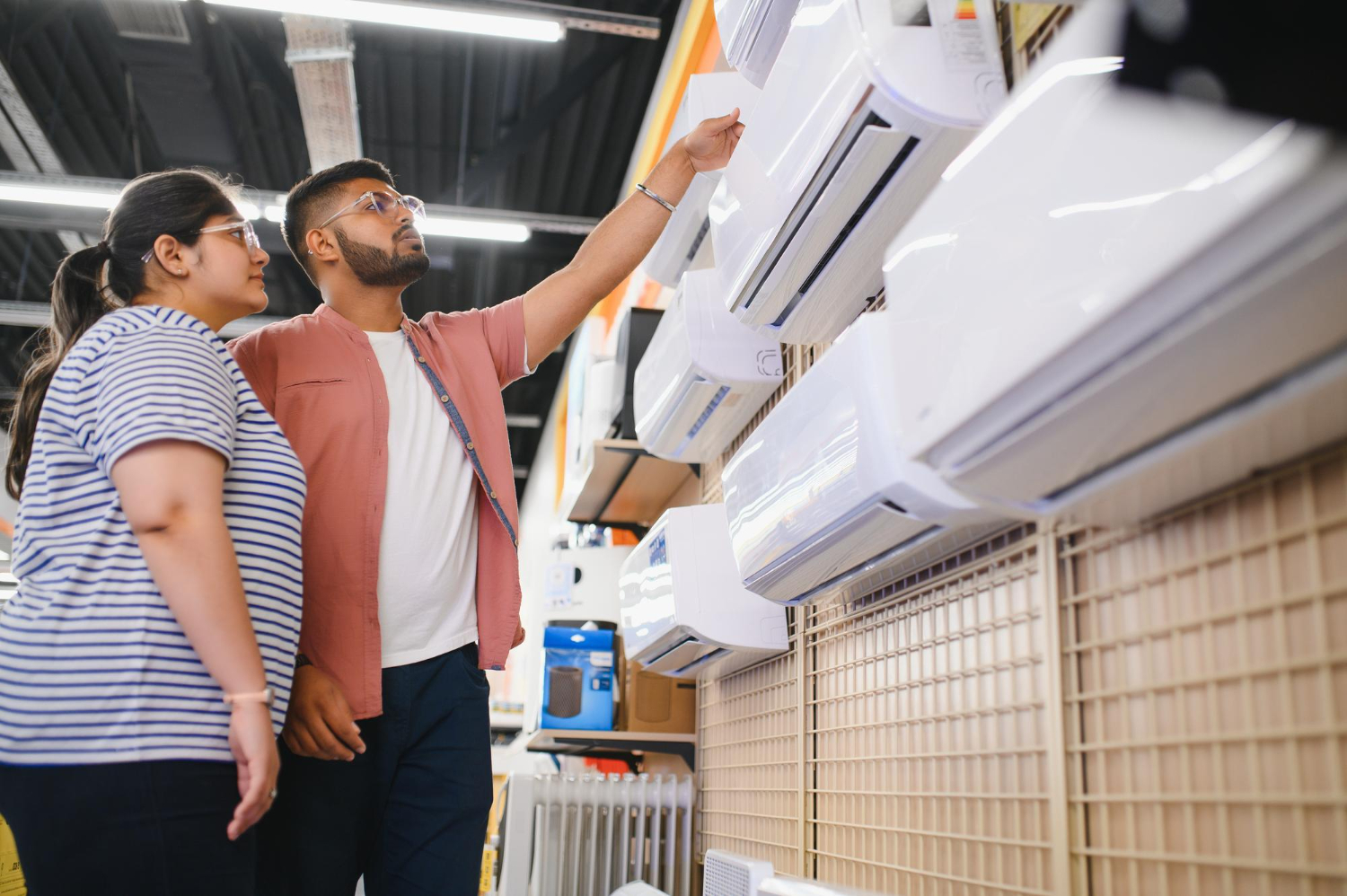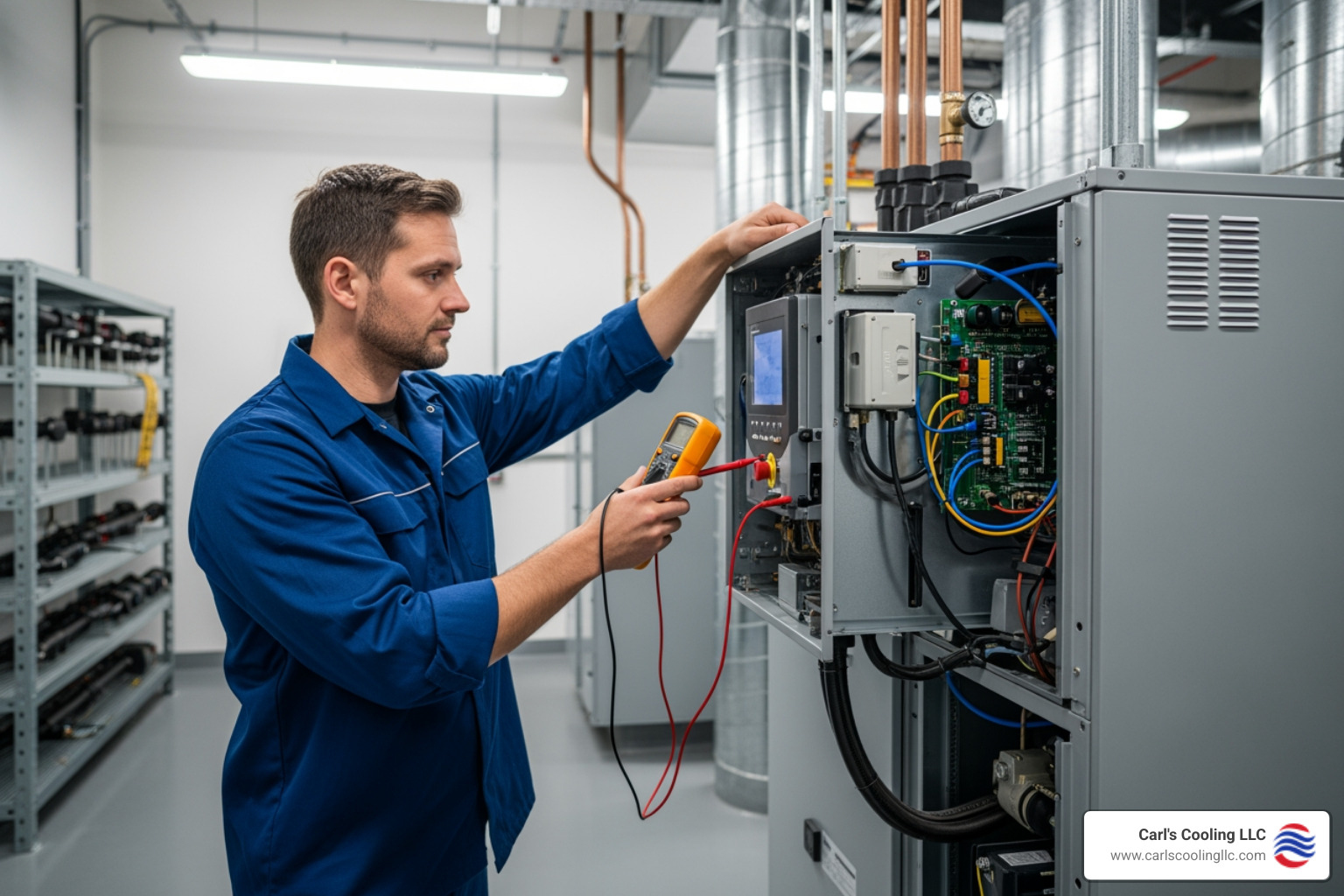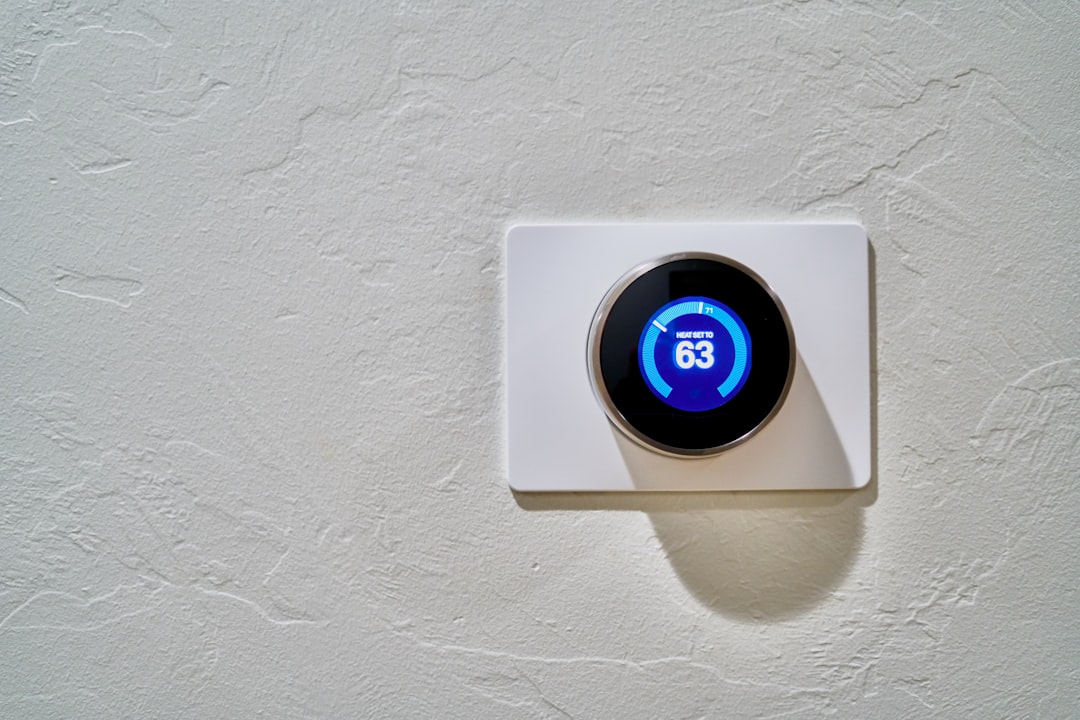When summer temperatures peak in Conroe, having the right air conditioning system in place isn't just about comfort. It's about making sure your home cools efficiently without overworking your AC unit. One major factor homeowners often miss is whether their system is actually sized correctly for their space. The wrong AC size can cause a chain reaction of problems that go beyond just temporary discomfort.
If an AC unit is too big, it may cool the house quickly but shut off before it dehumidifies the air, leading to a sticky and uneven indoor climate. On the flip side, an undersized system will struggle to keep up with demand, running longer than it should and wearing itself down faster. Either way, this puts your comfort and energy use at risk. Knowing how to choose the right size AC is the first step toward avoiding these issues in your Conroe home.
Understanding What AC Sizing Really Means
AC sizing isn’t about the unit’s physical dimensions. It refers to the system’s capacity to cool a certain amount of space, measured in BTUs, or British Thermal Units. The higher the BTU rating, the more cooling power the system has. But that doesn’t mean a higher number is always better. Finding the right size involves balancing your home’s cooling needs with what the AC can deliver.
Several factors influence your home’s cooling needs. One of the biggest is square footage. A larger home usually needs more cooling power, but square footage alone isn’t enough. You also need to consider:
- Ceiling height, since more vertical space adds to the volume of air to cool
- Amount of insulation in the walls and attic, which affects heat retention or loss
- Number, size, and placement of windows, especially if they face direct sunlight
- Number of people regularly in the home, since more body heat increases cooling demand
- Whether heat-generating appliances are used often in specific areas of the home
- The local climate, and in this case, Conroe’s hot and humid summers are a big factor
Each of these elements affects how hard the AC will have to work to keep your home at a stable, comfortable temperature. That is why simply picking a unit based on a rough square footage estimate can leave you with a system that either underperforms or wastes energy. Getting the right fit from the beginning helps you stay cool and avoid mechanical strain on the system.
How To Calculate The Right AC Size
Sizing an AC involves more than just looking up a chart or plugging numbers into an online calculator. While those can give you a starting point, they do not take your home’s unique conditions into account. Still, it helps to understand the basic principles used to determine AC size.
Here is a simplified look at the steps typically followed:
1. Measure the square footage of the area that needs cooling
2. Multiply that number by 20 BTUs (a general starting point for cooling typical spaces)
3. Adjust the total based on ceiling height, sunlight exposure, insulation quality, and room usage
4. Consider your home’s layout and whether rooms are closed off or openly connected
Suppose you have a 1,600-square-foot house in Conroe with average insulation and a standard ceiling height. Based on the general estimate, that would put your need at around 32,000 BTUs. But if your home has large east- and west-facing windows and sun hits hard in the afternoon, that number may need to go even higher. On the other hand, if your home has extra insulation and stays shaded during peak sun hours, you might need less power than expected.
This is where professional input becomes important. A manual load calculation performed by trained technicians considers your home’s complete thermal profile, not just square footage. This helps avoid the common pitfall of installing a unit that looks right on paper but struggles when real-life conditions set in.
Common Mistakes That Lead to Comfort Issues
A properly sized air conditioner should cycle at regular intervals, provide steady airflow, and maintain an even temperature across your home without causing hot or cold spots. When the unit is not correctly sized, these conditions are harder to achieve. Many homeowners in Conroe run into temperature problems during summer simply because of a system that is either too large or too small for their home.
Oversizing is one of the most common problems. It often happens when a bigger unit is chosen with hopes that it will cool quickly and more effectively. While it might lower the temperature fast, it may not run long enough to remove humidity. That can leave indoor air feeling heavy and uncomfortable even when the thermostat says it is at the right setting. Larger systems also tend to short cycle, which increases wear and tear, puts pressure on components, and leads to a shorter overall lifespan.
On the other hand, an undersized AC tries to keep up with demand but cannot quite reach the desired temperature, especially on hotter days. It ends up running longer and harder than it should, which means your energy bills go up even though your comfort goes down. You may notice warmer rooms during the day or a system that never seems to stop running, especially in the late afternoon when outside temperatures peak.
These types of sizing issues, both under and over, can affect more than just comfort. They often lead to maintenance problems, uneven airflow, and higher repair needs, all within a shorter timeframe than expected. Avoiding those issues starts by knowing what problems sizing mistakes actually cause and then taking steps to prevent them.
Why Have Our Professionals Do a Custom AC Assessment
It is hard to get AC sizing right without experience. Every home is different, even if two houses in Conroe are the same square footage. One might have large windows with heavy sun exposure, while the other stays mostly shaded. That is why a custom assessment carried out by our professionals is key.
During a professional load calculation or sizing analysis, our technicians take into account:
- Total square footage
- Type and condition of insulation
- Orientation of the house and amount of sun exposure
- Window and door types (single pane, double pane, etc.)
- Occupant habits, including types of appliances used regularly and total household occupancy
- Ductwork size and condition
This deeper look helps determine more than just how strong the AC unit should be. It lets our team recommend an exact setup based on your real lifestyle and home layout. Even something like a two-story floor plan versus a single-level open concept makes a big impact on how air needs to circulate.
A one-size-fits-all approach does not work for heating and cooling systems, especially during hot and humid Conroe summers. An accurately sized AC ensures you are not overspending on utility costs and keeps your home more evenly cooled throughout the space. Getting professional support from the beginning gives you peace of mind that your system is designed for your actual day-to-day needs, not just a blueprint.
Comfort You Can Count on in Conroe
Comfort problems during the summer can usually be traced back to the wrong AC unit size. Whether it is poor airflow, humid indoor air, or a system that seems like it never stops running, these signs all point to sizing issues. Getting it fixed starts with knowing how size really impacts performance and why it is worth taking the time to evaluate it properly.
Conroe homeowners need more than just an AC unit that works. You need one that works well for your specific space. Taking the guesswork out of sizing means fewer temperature swings, less mechanical stress, and better long-term reliability. It also means creating a more stable and enjoyable environment during the heat of summer year after year.
Ensure your home stays reliably cool this summer by choosing the right AC setup. If you suspect sizing issues are affecting performance, consider professional AC installation in Conroe for a solution tailored to your space and needs. Carl's Quality Cooling and Heating LLC is ready to help you achieve consistent comfort and greater efficiency. For a quick estimate or to book a service visit, please contact us today.






